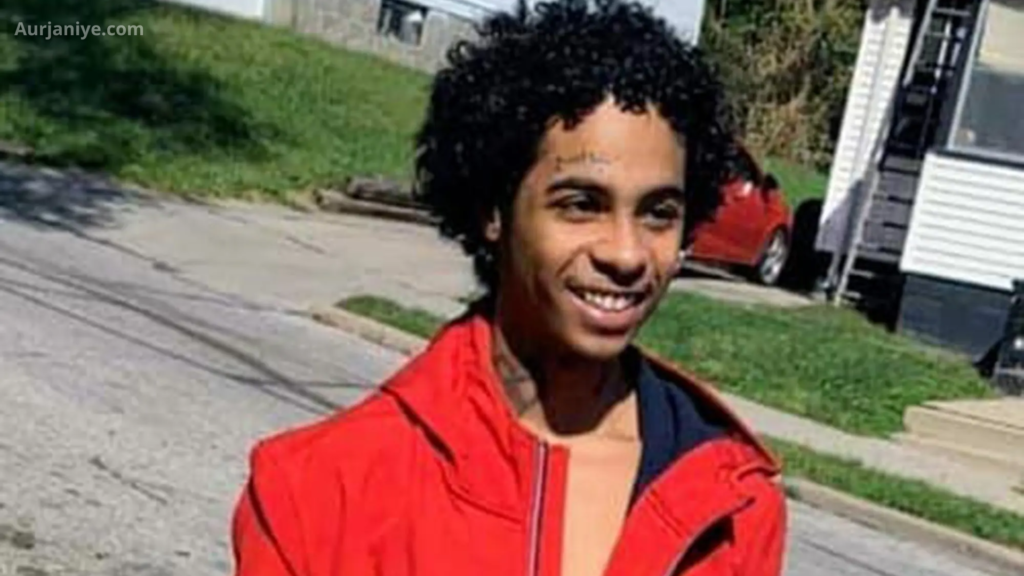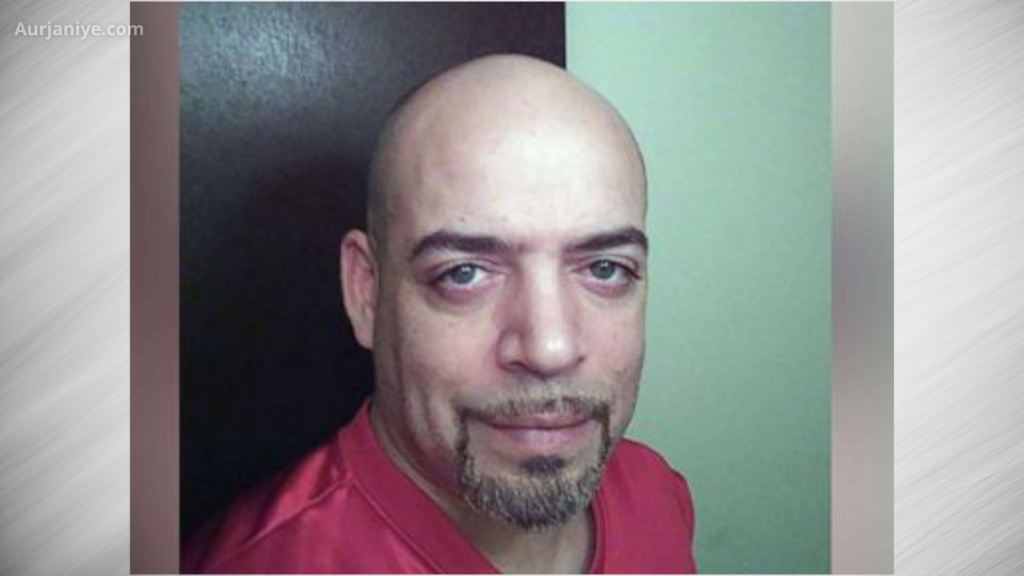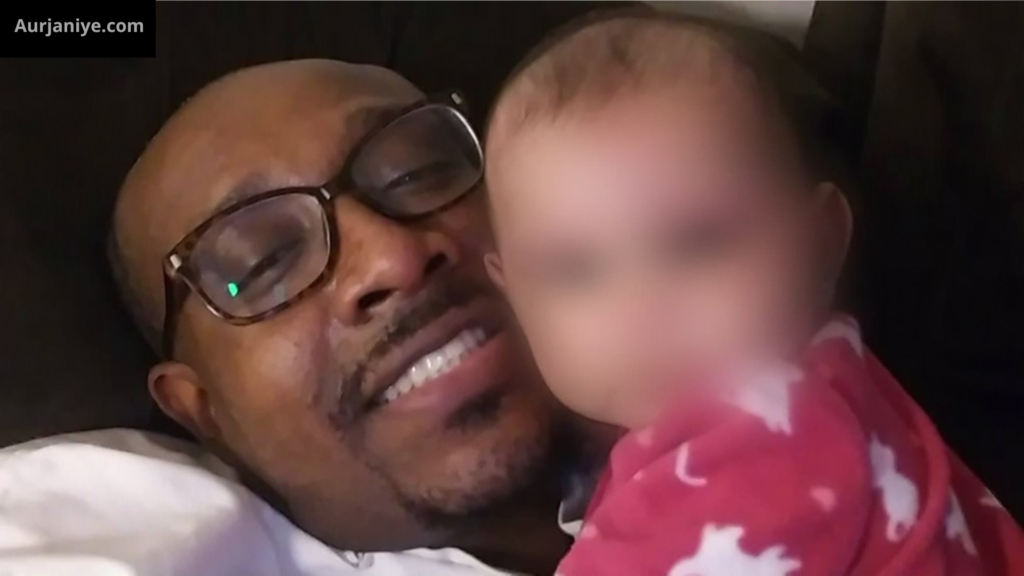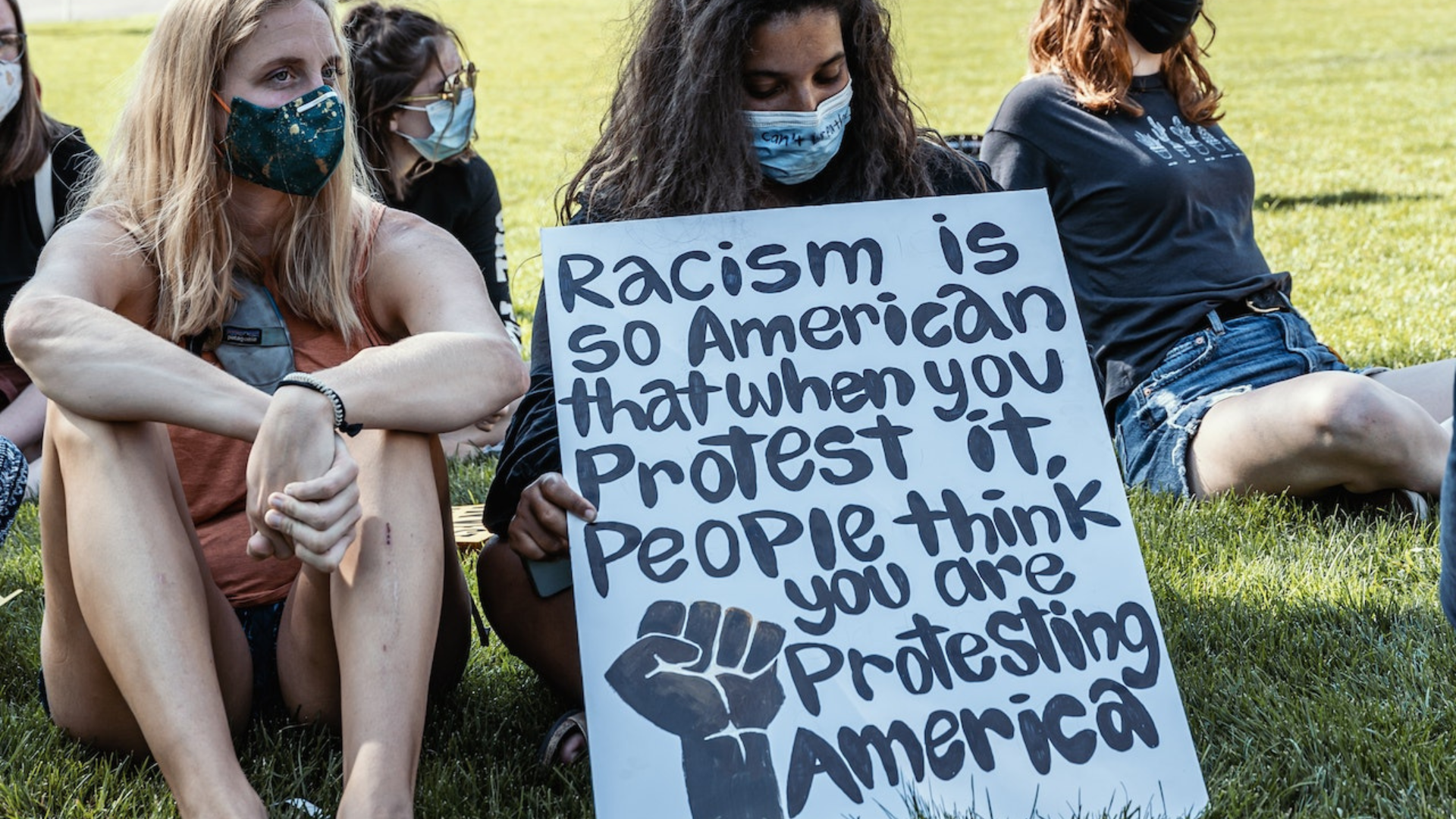Most Racist States In America – The history of race relations in America is long and complicated. Despite recent reforms, racism and racial violence remain major issues in many parts of the country. A hate crime is a criminal offense against a person or property motivated in whole or in part by an offender’s bias against a race, religion, disability, sexual orientation, ethnicity, gender, or gender identity. Racially motivated crime is a crime committed against a member of a particular group, motivated by a prejudice against that particular group.
NOTE- According to the FBI, in 2020, more than 7,000 hate crimes motivated by race, ethnicity, race and national origin will be recorded. More than 4,000 of these were due to prejudice against blacks or African Americans.
Also Read – Russia Ukraine War Latest Change
What Is Racism?
Racism, also called racialism, the belief that humans may be divided into separate and exclusive biological entities called “races”; that there is a casual link between inherited physical traits and traits of personality, intellect, morality, color and other cultural and behavioral features; and that some races are superior to others.
Racial discrimination refers to the differential treatment of the members of different ethnic, religious, national, or other groups, and therefore involves negative, hostile, and injurious treatment of members of rejected groups.
What USA’s latest Hate Crime Statistics Say
According to the resources & article “Updated 2021 Hate Crime Statistics” published by the Department of Justice provides an overview of hate crimes in the United States in 2021
The 2021 Hate Crime Report released by the United States Department of Justice provides information about the offenses, victims, offenders, and locations of hate crimes. The report is based on data submitted by 14,859 law enforcement agencies and includes official data reported by 41 states.
According to the report, there were 10,840 hate crime incidents involving 12,411 offenses in 2021. Anti-Black, anti-Asian, anti-Jewish, and anti-gay incidents were the most prevalent. Racially motivated hate crimes accounted for around three-quarters of such offenses in England and Wales.
Anti-Asian incidents jumped 224% in 20 of the largest U.S. cities¹. Of the 5,781 hate crime offenses classified as crimes against persons in 2021: 44.2% were intimidation; 35.9% were simple assault; 18.3% were aggravated assault. Thirteen rapes and nine murders were also reported as hate crimes.
Facts of racism in the States of America
According to the data from the FBI’s Uniform Crime Reporting (UCR) Program, there were 7,759 hate crimes in the US in 2020. The majority of these hate crimes were motivated by race/ethnicity/ancestry bias (57.6%) followed by religious bias (20.4%) and sexual orientation bias (16.7%).
America’s top 5 Most Racist States In America
America has a long and complicated history with race. Racial tensions have been part of the fabric of this country since the days of slavery. In recent years, there has been a renewed focus on racial justice, as evidenced by the Black Lives Matter movement. Despite these advances, however, racial crime remains a problem in America.
According to the FBI, more than 7,100 hate crimes were reported in the United States in 2020. More than 50% of those were from ethnic The five States with the highest rates of hate crimes were California, Nebraska, Ohio, Washington, and New Yor .
There are many causes of ethnic crime. One factor is poverty. People who commit crimes in poverty are also more likely to commit crimes. Another factor is discrimination. Prejudiced people often become angry and frustrated, which can lead to violence.
1. CALIFORNIA

According to a 2021 report by the California Department of Justice, hate crimes in the state increased by 31% in 2020. The report found that the most common victims of hate crimes were Asian Americans, followed by Black Americans and Hispanic Americans.
California has the highest rate of hate crimes in the United States. In 2020, there will be 1,537 reported hate crimes in California. 60% of these are motivated by race or ethnicity. Victims of hate crimes in California include African Americans, Latinos and Asian Americans.
Major past Racial Incidents in California
In 2020, a Black man named George Floyd was killed by a white police officer in Minneapolis, Minnesota. Floyd’s death sparked protests and riots across the country, including in California. The protests in California were largely peaceful, but there were also a number of incidents of violence and looting.
In 2021, a Chinese American woman named Michelle Go was pushed to her death in front of a train in New York City. Go’s death was ruled a hate crime, and the suspect, a homeless man, was charged with murder as a hate crime.
In 2022, a Japanese American woman named Tomomi Yamaguchi was attacked in San Francisco. Yamaguchi was walking home from work when she was attacked by a man who shouted racial slurs at her. The man was arrested and charged with hate crimes.
Some report also found that the most common types of hate crimes were anti-Asian hate crimes, followed by anti-Black hate crimes and anti-Hispanic hate crimes.
2. Nebraska

According to a 2021 report from the Office of the Nebraska Attorney General, hate crimes in the state increased by 13% in 2020. The report found that black Americans were the most likely victims of hate crimes, followed by white Americans and Asians Americans are the next to do it.
Major past Racial Incidents in Nebraska
In 2020, a Black man named James Scurlock was killed by a white bar owner in Omaha. Scurlock was protesting the death of George Floyd when he was shot and killed by Jake Gardner. Gardner was charged with manslaughter, but he was acquitted by a jury in 2021.
In 2021, a Black woman named Malia Fuller was arrested by police in Lincoln after she was mistaken for a suspect in a robbery. Fuller was handcuffed and placed in the back of a police car, but she was later released after it was determined that she was not the suspect.
In 2022, a group of white teenagers were caught on video harassing a group of Asian American students at the University of Nebraska-Lincoln. The teenagers were shouting racial slurs and making threats against the students. The university has since launched an investigation into the incident
These are just a few examples of the major racial incidents that have happened in Nebraska recently. These incidents highlight the ongoing problem of racism in the state, and they serve as a reminder that there is still much work to be done to create a more just and equitable society. Most Racist States In America
3. Ohio

US state Ohio has the third-highest rate of hate crimes. There will be 104 reportable hate crimes in Ohio by 2020, 50% of them are related to racially and ethnic crimes. Majority of the victims of hate crimes in Ohio include African-Americans, Latinos and Jews
Major past Racial Incidents in Ohio
In 2020, a Black man named Ma’Khia Bryant was shot and killed by a white police officer in Columbus. Bryant was holding a knife, and she was shot four times by the officer. The officer was later cleared of any wrongdoing by a grand jury.
In 2021, a Black man named Andre Hill was shot and killed by a white police officer in Akron, USA. Hill was unarmed, but he was shot three times by the officer. The officer was later charged with murder and manslaughter by the US court.
In 2022, a group of white teenagers were caught on video harassing a group of Asian American students at Ohio State University. The teenagers were shouting racial slurs and making threats against the students. The university has since launched an investigation into the incident.
America
These are just a few examples of the major racial incidents that have happened in Ohio recently. These incidents highlight the ongoing problem of racism in the state, and they serve as a reminder that there is still much work to be done to create a more just and equitable society.
According to a 2021 report by the Ohio Attorney General’s Office, hate crimes in the state increased by 17% in 2020. The report found that the most common victims of hate crimes were Black Americans, followed by white Americans and Asian Americans.
4. Washington

Washington State has the fourth-highest rate of hate crimes in the United States. By 2020, hate crimes were reported in Washington, DC. 50% of them are racial and ethnic. The victims of hate crimes in Washington are African Americans, Latinos and Asian Americans.
There are many reasons for the increase in hate crimes in Washington. One factor is the country’s population and diversity. Washington is home to people from all over the world, a diversity that can sometimes lead to conflict. Another factor is the country’s history of ethnic conflict. Washington has a long history of discrimination against African Americans, Latinos and Asian Americans. This history of discrimination has created an atmosphere of anger and resentment that can sometimes lead to violence
Major past Racial Incidents in Washington
In 2020, a black man named Manuel Ellis is killed by police in Tacoma. Ellis was unarmed and restrained by police several minutes before his death. The officers involved were later charged with murder.
In 2021, a black man named Dashaun Hill was shot and killed by police in Seattle. Hill was unarmed and was shot in the back by police. The grand jury indicted the police officer involved later on no felonies.
In 2022, a group of white teenagers were caught on video bullying a group of Asian-American students at the University of Washington. The youth shouted racial slurs and threatened the students. The university has since launched an investigation into the incident.
These are just a few examples of the major racial incidents that have happened in Washington recently. These incidents highlight the ongoing problem of racism in the state, and they serve as a reminder that there is still much work to be done to create a more just and equitable society.
According to a 2021 report by the Washington State Department of Social and Health Services, hate crimes in the state increased by 16% in 2020. The report found that the most common victims of hate crimes were Black Americans, followed by Asian Americans and Hispanic Americans.
5. Texas

The second-largest state in America (Texas) has seen a rise in hate crimes. This is a cause for concern, and a reminder that racism remains a serious problem in the state. It is important to remember that everyone deserves respect regardless of race, ethnicity or any other factor.
In addition to these major incidents, there have been many other smaller incidents of racism that have been reported in Texas in recent years. These incidents include verbal abuse, physical assault, and discrimination in housing, employment, and education.
Major past Racial Incidents in Texas
In 2020, a Black man named Atatiana Jefferson was shot and killed by a white police officer in Fort Worth. Jefferson was inside her own home when she was shot through a window. The police officer involved was later fired and charged with murder.
2021, a Black man named Jonathan Price was shot and killed by a white police officer in Corsicana. Price was walking home from a barbecue when he was shot by the police officer. The police officer involved was later arrested and charged with murder.
And In 2022, a group of white teenagers were caught on video harassing a group of Asian American students at the University of Texas at Austin. The teenagers were shouting racial slurs and making threats against the students. The university has since launched an investigation into the incident.
According to a 2021 report by the Texas Department of Public Safety, there were 1,244 hate crimes reported in Texas in 2020, an increase of 10% from 2019. The report found that the most common victims of hate crimes were Black Americans, followed by Hispanic Americans and Asian Americans.
FAQ’s | Racism in the USA | Most Racist States In America
- Q: What is racism?
A: Racism refers to the belief in the superiority or inferiority of individuals based on their race, and the systemic discrimination and prejudice that result from these beliefs. - Q: What are some historical events that have perpetuated racism in the US?
A: Examples include slavery, segregation, Jim Crow laws, the Trail of Tears, and discriminatory immigration policies. - Q: How does systemic racism differ from individual racism?
A: Individual racism refers to personal beliefs and actions, while systemic racism refers to the broader societal structures and institutions that perpetuate racial inequality. - Q: What is white privilege?
A: White privilege refers to the unearned advantages and societal benefits that white individuals often receive simply because of their skin color, which can contribute to systemic racial disparities. - Q: What is racial profiling?
A: Racial profiling is the practice of law enforcement or other authorities targeting individuals based on their race or ethnicity, often leading to unfair treatment and bias. - Q: How does racism impact communities of people?
A: Racism can result in socioeconomic disparities, limited access to education and healthcare, unequal opportunities, and increased rates of police brutality and discrimination. - Q: What is cultural appropriation, and why is it problematic?
A: Cultural appropriation refers to the adoption or borrowing of elements from another culture, often without understanding or respecting its significance, which can perpetuate stereotypes and devalue marginalized cultures. - Q: How does racism affect mental health?
A: Racism can contribute to stress, anxiety, depression, and trauma among individuals who experience discrimination, microaggressions, or systemic oppression. - Q: What is the role of education in combating racism?
A: Education plays a vital role in challenging stereotypes, promoting inclusivity, fostering empathy, and providing historical context to address racism effectively. - Q: How can individuals be allies in the fight against racism?
A: Being an ally involves actively supporting marginalized communities, educating oneself, amplifying their voices, challenging discriminatory behaviors, and advocating for systemic change. - Q: What is the impact of racism on the criminal justice system?
A: Racism can result in racial profiling, harsher sentencing, and disproportionate incarceration rates for communities of color, highlighting systemic biases within the criminal justice system. - Q: What is the significance of diversity and representation in various industries?
A: Diversity and representation are crucial for fostering inclusive environments, providing equal opportunities, challenging stereotypes, and promoting diverse perspectives and experiences. - Q: How does racism intersect with other forms of discrimination?
A: Racism can intersect with sexism, homophobia, transphobia, ableism, and other forms of discrimination, resulting in compounded experiences of marginalization for individuals with intersecting identities. - Q: How can communities address systemic racism and promote racial equity?
A: Communities can engage in dialogue, advocate for policy reforms, support anti-racist organizations, promote diversity in leadership positions, and implement inclusive practices to combat racism. - Q: What is the role of individuals in dismantling racism?
A: Individuals can challenge their own biases, engage in difficult conversations, support inclusive initiatives, vote for equitable policies, and actively work towards creating a more just and equal society for all.
This research is based on the official sites data :- Please provide us feedback and suggestions to help Improve Aurjaniye.com
